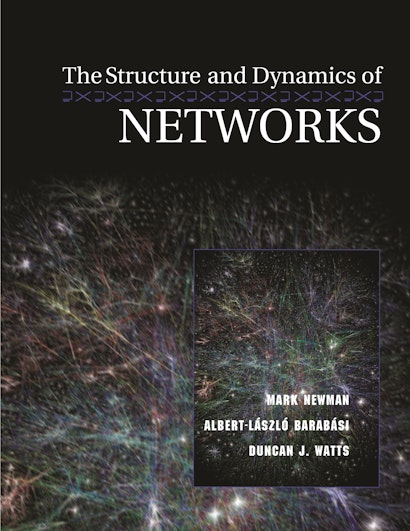From the Internet to networks of friendship, disease transmission, and even terrorism, the concept—and the reality—of networks has come to pervade modern society. But what exactly is a network? What different types of networks are there? Why are they interesting, and what can they tell us? In recent years, scientists from a range of fields—including mathematics, physics, computer science, sociology, and biology—have been pursuing these questions and building a new “science of networks.” This book brings together for the first time a set of seminal articles representing research from across these disciplines. It is an ideal sourcebook for the key research in this fast-growing field.
The book is organized into four sections, each preceded by an editors’ introduction summarizing its contents and general theme. The first section sets the stage by discussing some of the historical antecedents of contemporary research in the area. From there the book moves to the empirical side of the science of networks before turning to the foundational modeling ideas that have been the focus of much subsequent activity. The book closes by taking the reader to the cutting edge of network science—the relationship between network structure and system dynamics. From network robustness to the spread of disease, this section offers a potpourri of topics on this rapidly expanding frontier of the new science.
Mark Newman is Professor of Physics at the University of Michigan. Albert-László Barabási is Emil T. Hofman Professor of Physics at the University of Notre Dame. He is the author of Linked: The New Science of Networks (Perseus Books). Duncan J. Watts is Associate Professor of Sociology at Columbia University. He is the author of Six Degrees: The Science of a Connected Age (W. W. Norton) and Small Worlds: The Dynamics of Networks Between Order and Randomness (Princeton).
"The Structure and Dynamics of Networks performs an important service by bringing together in one volume a number of papers on network theory, and placing them in their historical context. . . . [T]he volume will serve as an introduction to the topic for the novice and a resource for the more experienced researcher."—Sarah Boslaugh, MAA Reviews
"Everyone with a serious interest in the networks studies will want to read the many fine papers this major collection contains. It is to be warmly recommended as a volume deserving to become compulsory reading for all scholars (and students) interested in the field of networks."—Current Engineering Practice
"Each and every one of the featured papers represents a fundamental breakthrough, forming altogether a highly coherent body of knowledge. Professors Newman, Barabási, and Watts succeed in their selection, and at the same time add an extra value to the book with enlightening and interesting discussions. I strongly recommend this book to researchers and students of the field and, in general, to anyone who wants to enter or learn more about this exciting field of research."—Marián Boguñá, Journal of Statistical Physics
"The behavioural scientist interested in the wider picture of how their work fits into the world of networks is recommended this book as a first port of call for classic citations."—Sean A. Rands, Applied Animal Behavior Science
"This excellent collection of papers will provide great one-stop shopping to those working in the evolving world of network research. It may very well become a standard resource for the growing number of courses on networks now beginning to pervade curricula. Indeed, a current difficulty in teaching such a course is that there are no good texts, and a quick look around the Web reveals that almost all these courses are taught using research papers, many of which appear in this collection."—Dan Rockmore, Dartmouth College
"I read this anthology with great interest. The editors took pains to locate (and even translate) a significant number of papers predating the recent surge of interest in the science of networks, and they do a fine job of clarifying what exactly is new (and what is not so new) in the modern approach as reflected in the vast literature on the subject. The introduction to each section nicely summarizes the main findings of the featured articles."—Sergei Maslov, Brookhaven National Laboratory

